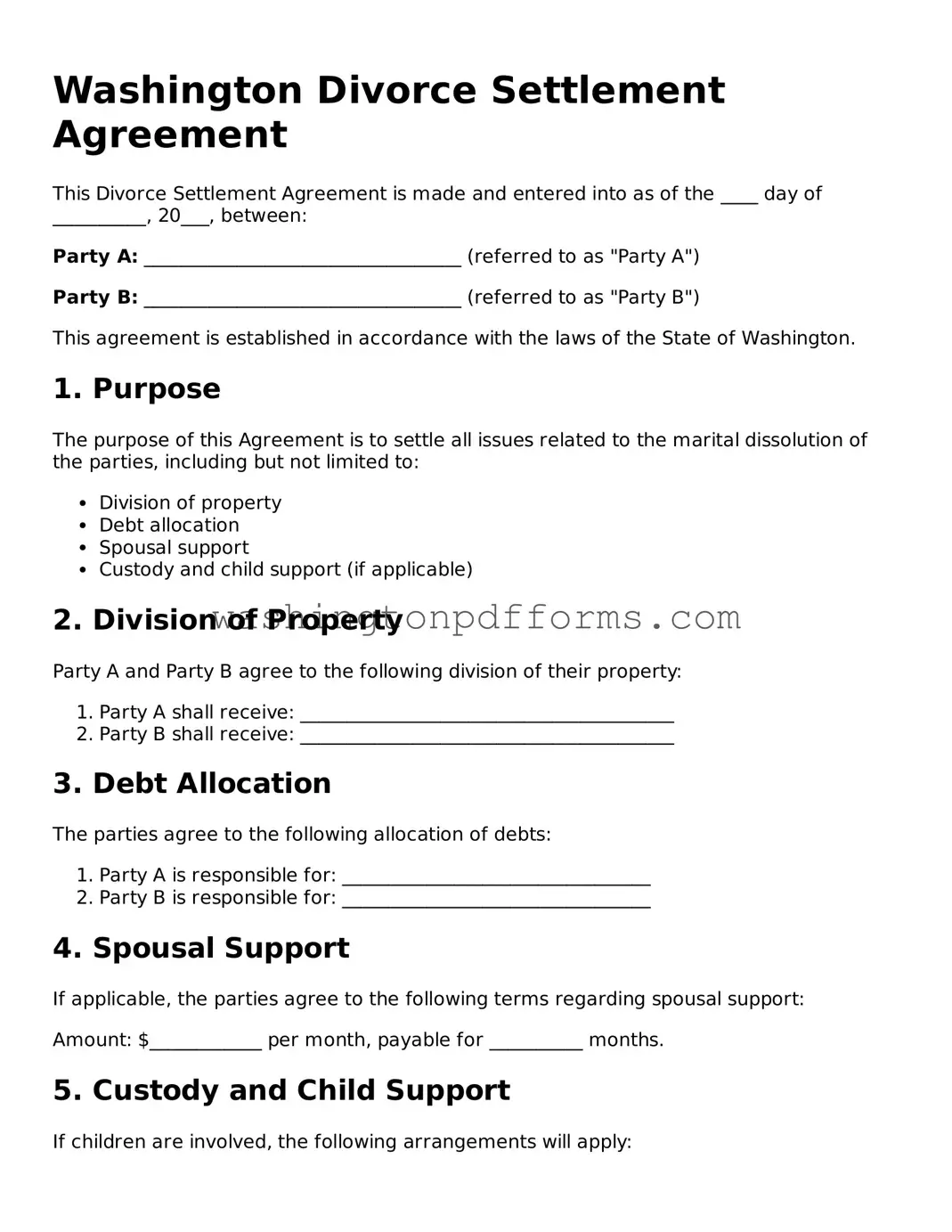Filling out the Washington Divorce Settlement Agreement form can be a daunting task. Many people make mistakes that can lead to delays or complications in their divorce process. Understanding these common pitfalls can help ensure that your agreement is completed accurately.
One frequent mistake is not being thorough with asset disclosures. When listing marital property, it’s essential to include all assets, even those that may seem insignificant. Omitting an asset can lead to disputes later on, so being comprehensive is crucial.
Another common error is inadequate child support calculations. Many individuals overlook the importance of accurately calculating child support based on state guidelines. This can result in financial strain or legal challenges down the road. It’s important to double-check these figures to ensure they reflect your situation accurately.
People also often fail to address debt division properly. Just as with assets, debts accrued during the marriage need to be divided fairly. Ignoring this aspect can lead to one party being stuck with more financial responsibility than they anticipated.
Additionally, some individuals do not consider tax implications of their settlement. Certain decisions, like who claims the children as dependents, can have significant tax consequences. It’s wise to consult a tax professional to understand how your choices may affect your finances.
Another mistake is not being specific enough in the terms of the agreement. Vague language can lead to confusion and disagreements later. Clearly outlining responsibilities and expectations can help prevent misunderstandings.
Finally, many people neglect to review the agreement thoroughly before signing. Taking the time to read through the entire document can help catch errors or unclear language. A careful review ensures that everything is in order and reflects what both parties have agreed upon.
By being aware of these common mistakes, individuals can approach the Washington Divorce Settlement Agreement form with greater confidence and clarity. Taking the time to avoid these pitfalls can lead to a smoother divorce process and a more equitable outcome for all parties involved.
